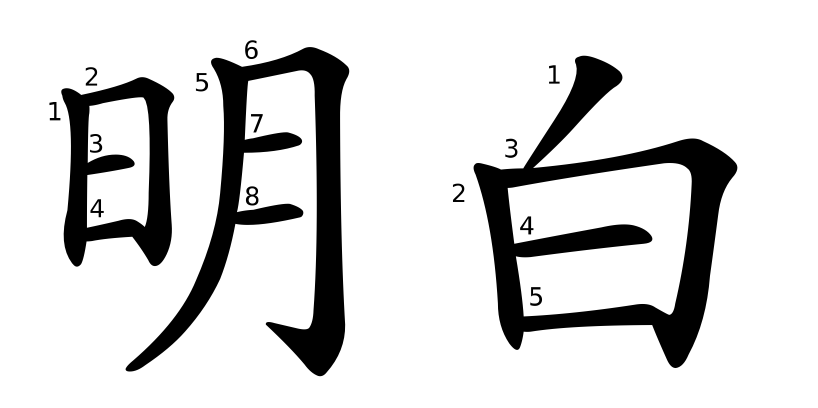Quick link:
父親/父亲、母親/母亲、姐姐、工作、很忙、每天、累、說話/说话、五口人、做飯/做饭、好吃、又忙又累、爸爸、媽媽/妈妈、夠/够、飯菜/饭菜、一下、能、自己、你是誰/你是谁、先說/先说、問題/问题、一共、六隻狗/六只狗、教書/教书、音樂/音乐、幾個/几个、爺爺/爷爷、奶奶、只有、兒子/儿子、女兒/女儿、明白
父親/父亲 N. [fùqīn] father (formal) 我父親是老師 / 我父亲是老师。My father is a teacher.
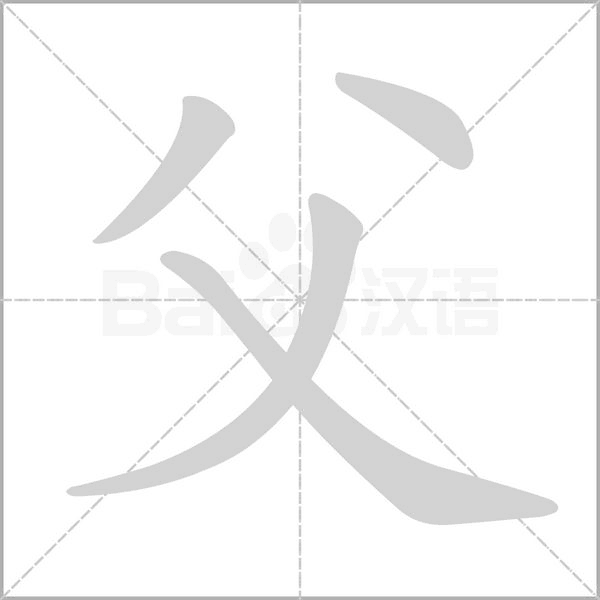
fù: father
radical: 父
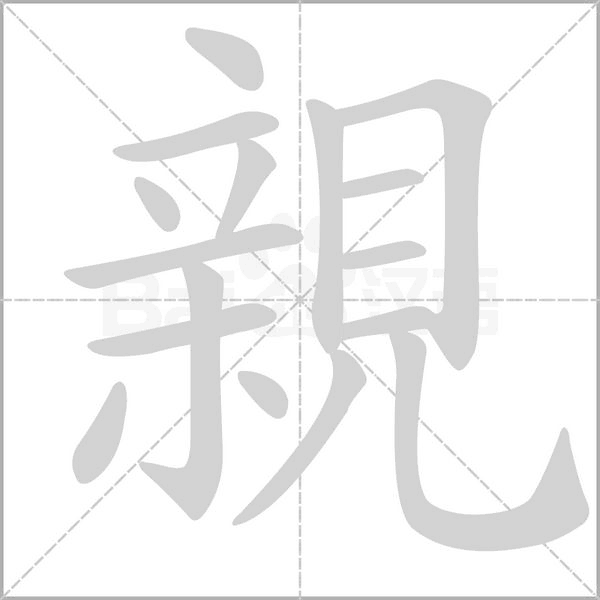
qīn: parent; beloved
radical: 亠
Simplified character:
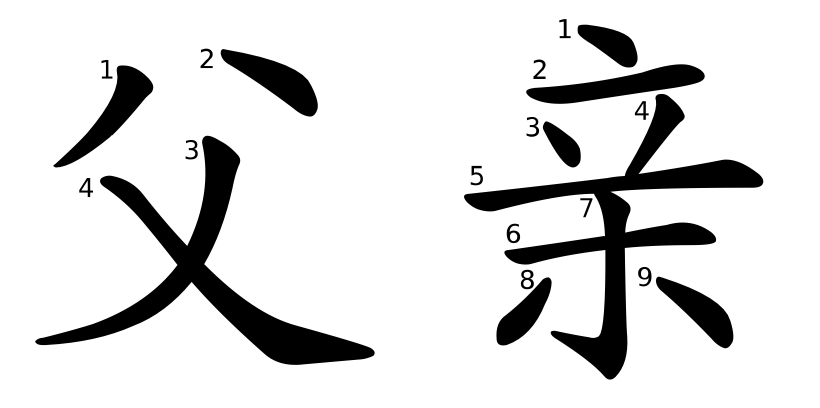
母親/母亲 N. [mǔqīn] mother (formal) 我母親是美國人/我母亲是美国人。My mother is American.
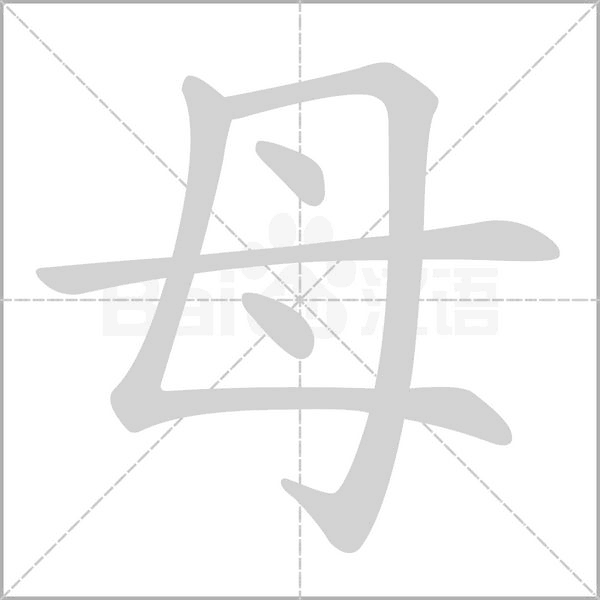
mǔ: mother; female
radical: 母

qīn: parent; beloved
radical: 亠
Simplified character:
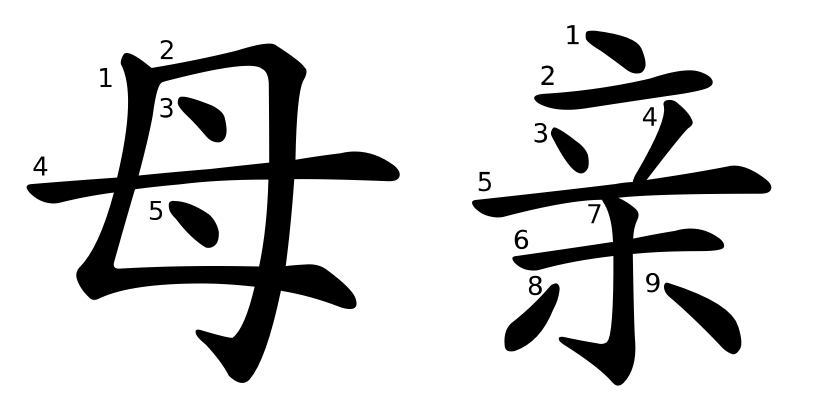
姐姐 N. [jiějie] elder sister. 我姐姐是中國人/我姐姐是中国人。My older sister is Chinese.
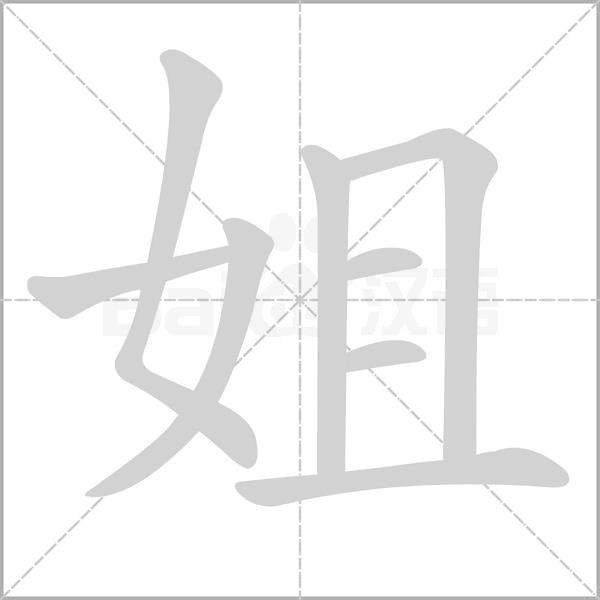
jiě: elder sister
radical: 女 (nǚ, female)
Both traditional and simplified characters are written as:
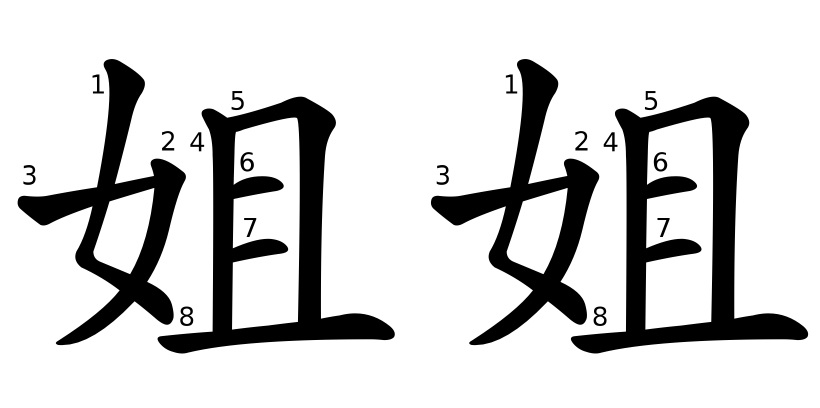
工作 N./V. [gōngzuò] job; work. 我喜歡我的工作/我喜欢我的工作。I like my job.
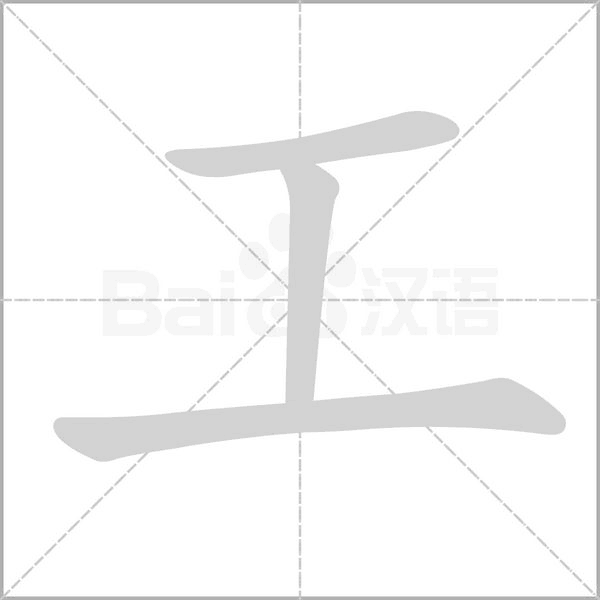
gōng: work; worker
radical: 工

zuò: do; rise; write; regard as
radical: 亻(rén; person)
Both traditional and simplified characters are written as:
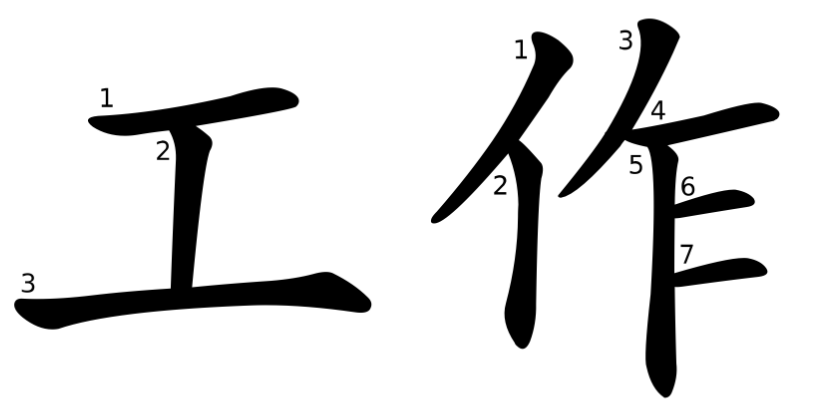
很忙 Adj. [hěnmáng] busy; very busy. 我很忙。I am busy.
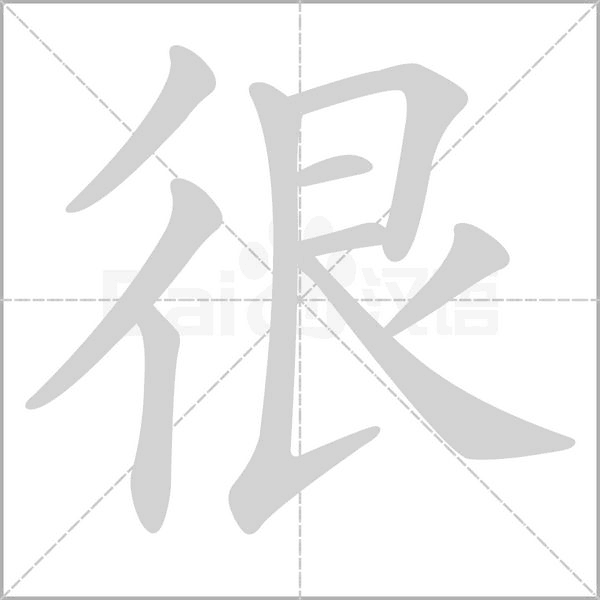
hěn: very
radical: 彳 (chì; taking small, slow steps, walking and stopping intermittently)
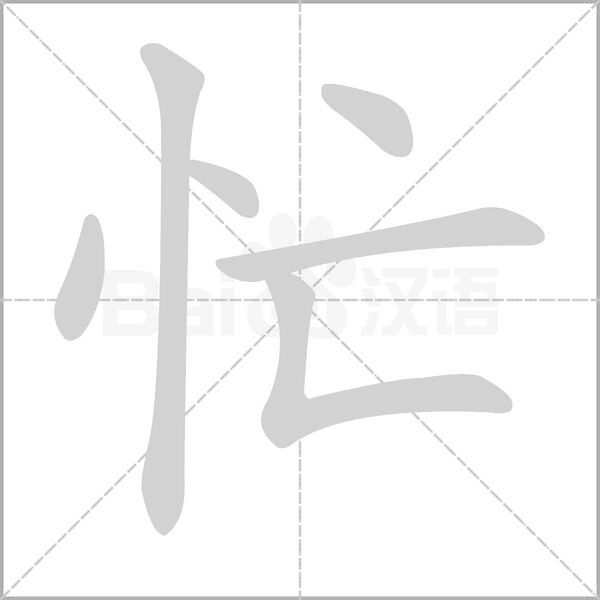
máng: busy
radical: 忄(xīn; heart)
Chinese Studies Classroom: In ancient Chinese thought, the heart was considered the organ of thought, so characters containing “心” or its variant “忄” often relate to mental or emotional activities. For example: 忙 (máng, busy), 忘 (wàng, forget), 想 (xiǎng, think) and so on.
Both traditional and simplified characters are written as:
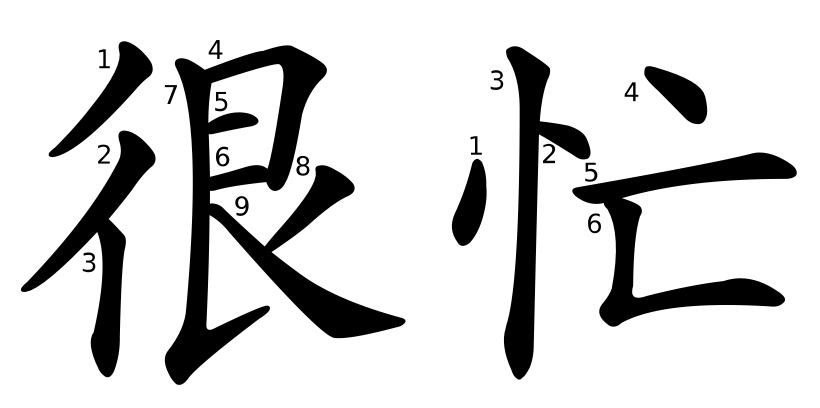
每天 Adj. [měitiān] everyday. 我每天都上課/我每天都上课。I have classes every day.

měi: every; each; per
radical: 母 (mǔ; mother; female)
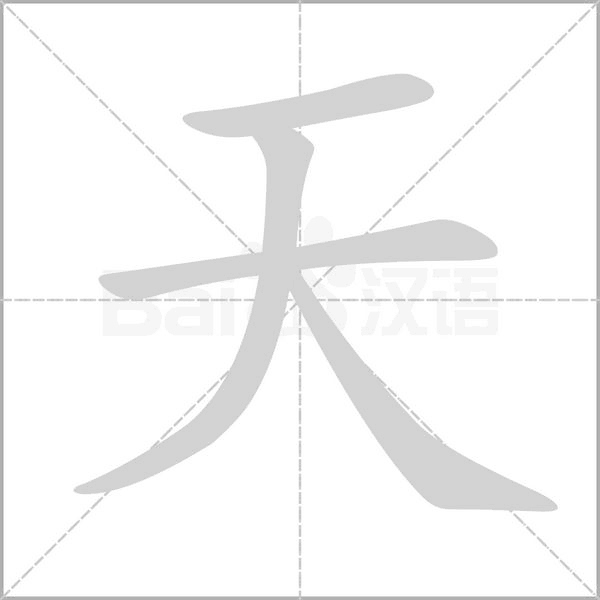
tiān: day
radical: 一
Both traditional and simplified characters are written as:
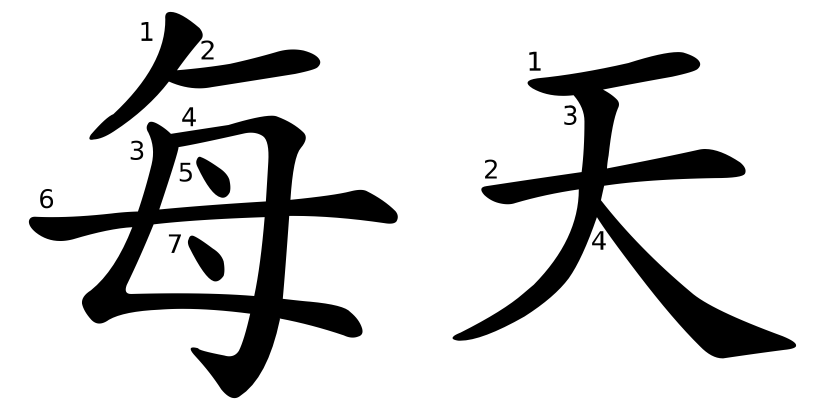
累 Adj. [lèi] tired. 我累了。I am tired.
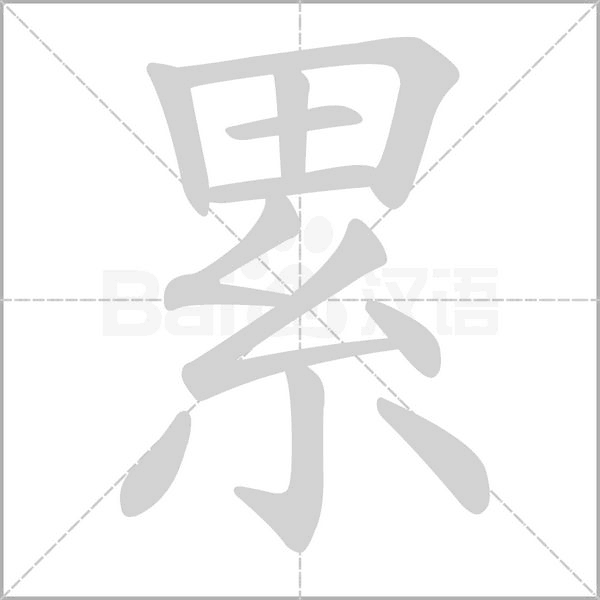
lèi: tired
radical: 糸 (mì/sī; silk)
Both traditional and simplified characters are written as:

說話/说话 VO. [shuōhuà] speak (lit. say words). 我不想說話/我不想说话。I don’t want to talk.
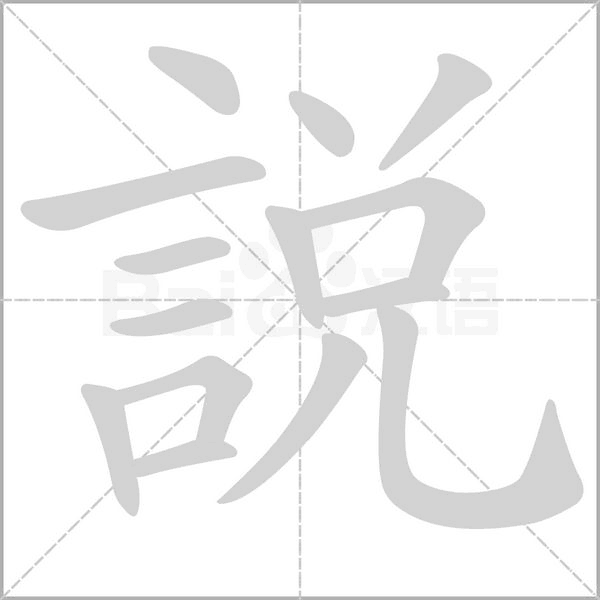
shuō: to speak
radical: 言 (yán; language)
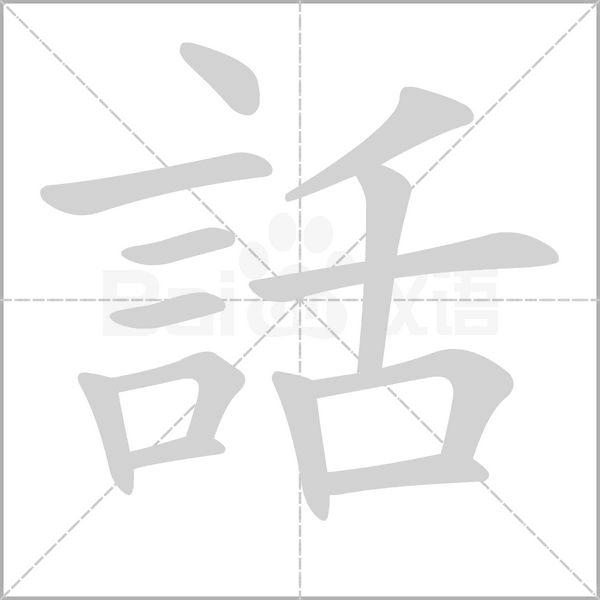
huà: word
radical: 言 (yán; language)

Chinese Studies Classroom: One interpretation of the character “言” is that, in ancient scripts, it looks like a horizontal line added to “舌” (tongue), representing words spoken through the tongue, which means “language.” Characters that include the “言” radical are often related to speech or language, such as 說 (shuō-speak), 話 (huà-word), 語 (yǔ-language), 談 (tán-discuss), etc.
Simplified character:
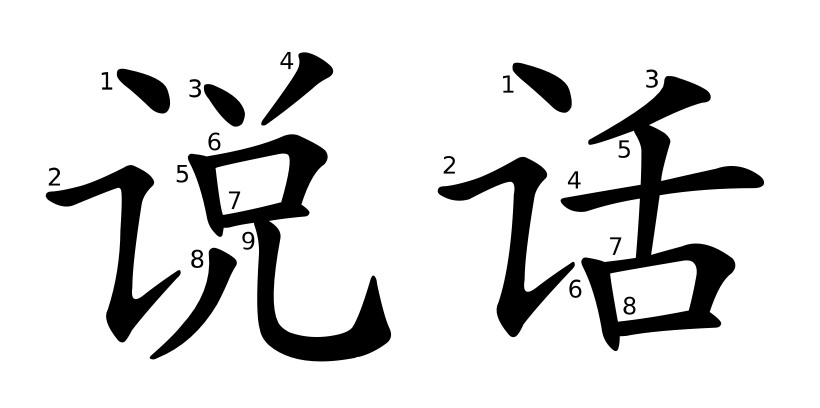
五口人 NP. [wǔkǒu rén] five (family) members. 我家有五口人。There are five people in my family.
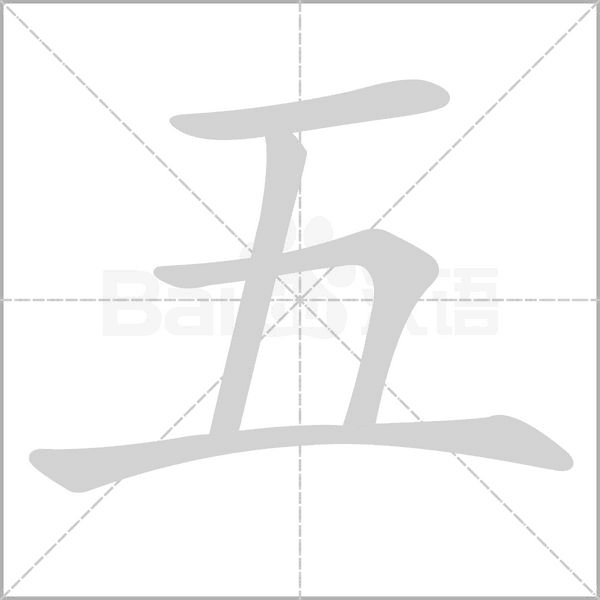
wǔ: five
radical: 一 or 二
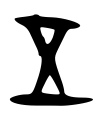
Chinese Studies Classroom: The original meaning of the character “五” is the five elements—metal, wood, water, fire, and earth—that make up the universe. In oracle bone script, the character “五” is depicted as a cross intersecting two horizontal lines, symbolizing the convergence of heaven, earth, and all things.

kǒu: mouth; used as a measure word to describe the number of family members.
radical: 口
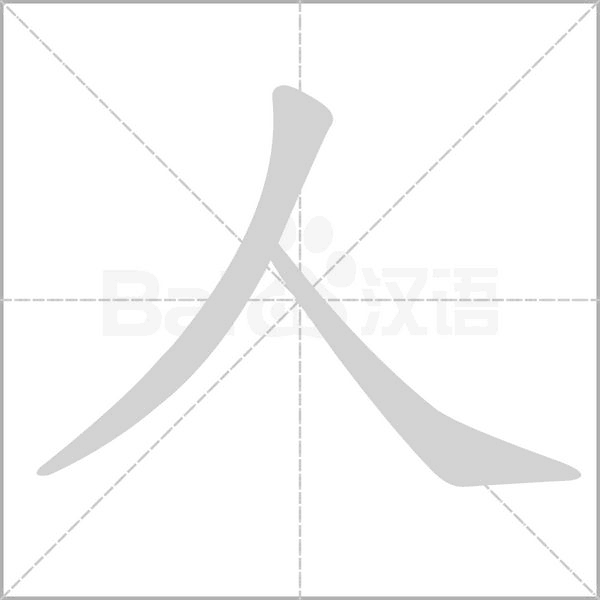
rén: person; people; human
radical: 人 (rén; person)
Both traditional and simplified characters are written as:
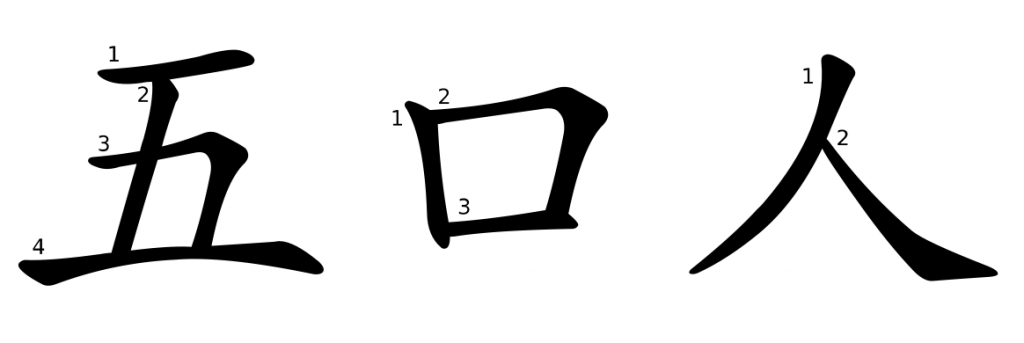
做飯/做饭 VO. [zuòfàn] VO. to cook. 我會做飯/我会做饭。I can cook.
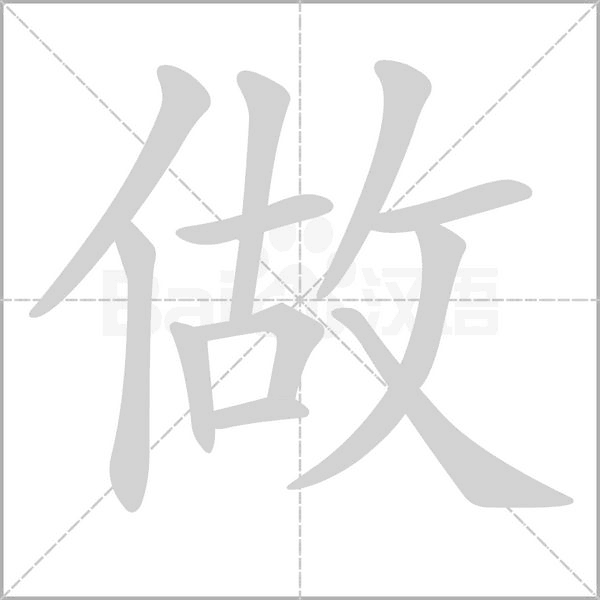
zuò: do; make; cook
radical: 亻(rén; person)
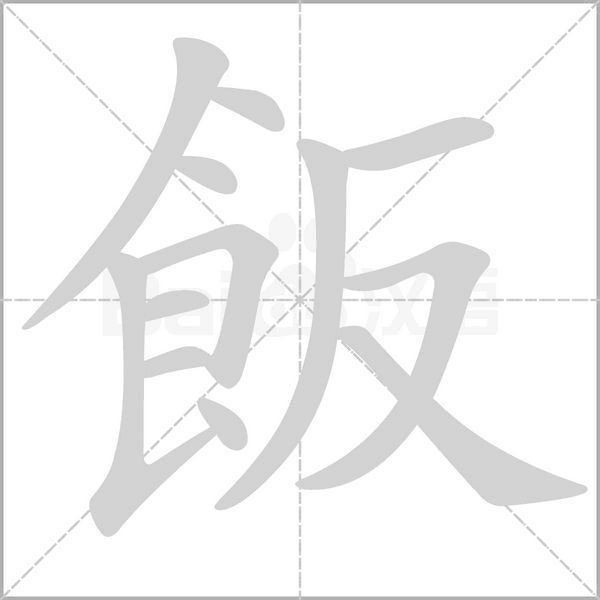
fàn: meal
radical: 食 (shí; food)
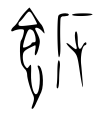
Chinese Studies Classroom: In ancient characters, the left side of “飯” is “食,” which looks like rice on a table, and the right side is “反.” “食” indicates something related to food, while “反” represents the pronunciation.
Simplified character:
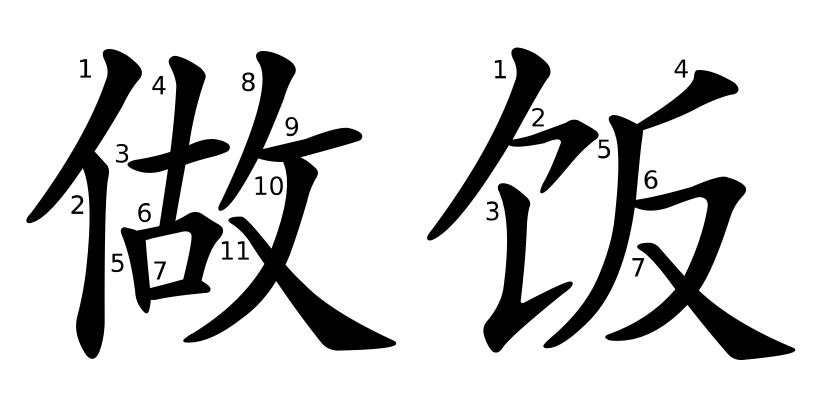
好吃 Adj. [hǎochī] delicious. 中國菜很好吃/中国菜很好吃。Chinese food is delicious.
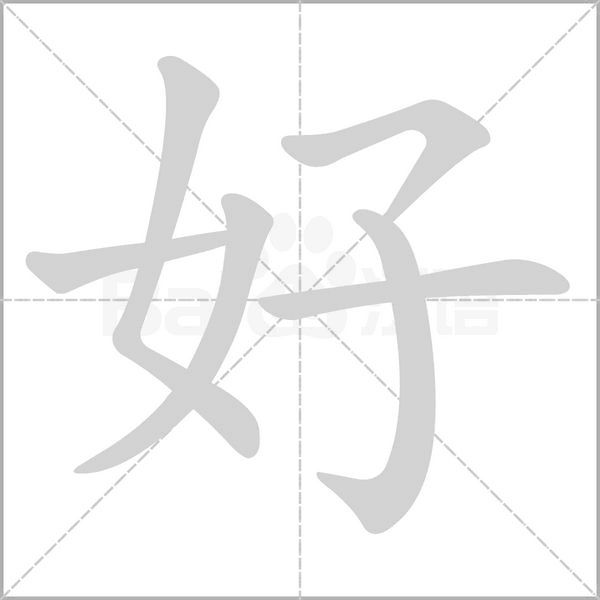
hǎo: good; nice; kind
radical: 女 (nǚ; female)

Chinese Studies Classroom: In oracle bone script, the left side of “好” is “女,” which can represent a woman or a mother, and the right side is “子,” which can represent a child or a male. One interpretation is that in matrilineal societies, women were highly respected, partly due to their ability to bear and raise children. The meaning of “好” as “good” or “beautiful” likely stems from this association with women’s role in reproduction and child-rearing. In ancient times, the act of women giving birth and raising children was regarded as a virtue, which led to the extension of the meaning of “good” or “beautiful.”
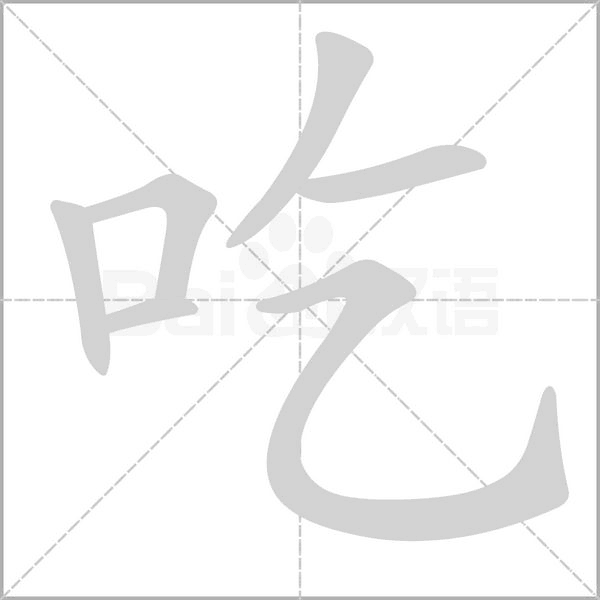
chī: eat
radical: 口 (kǒu; mouth)
Both traditional and simplified characters are written as:
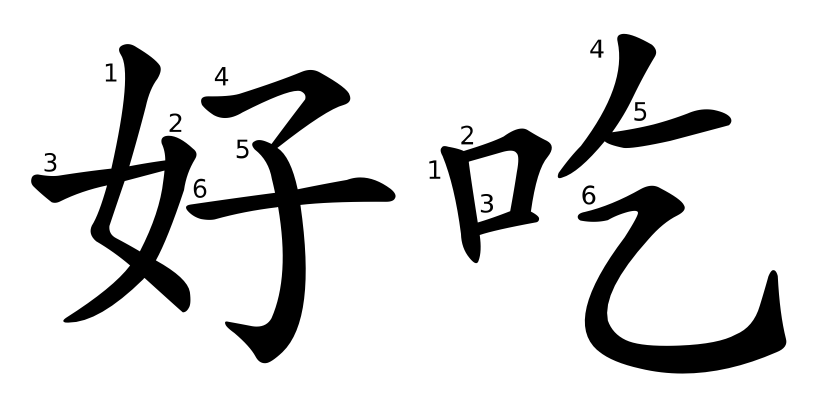
又忙又累 VP. [yòumáng yòulèi] both busy and tired. 我每天又忙又累。I am busy and tired every day.
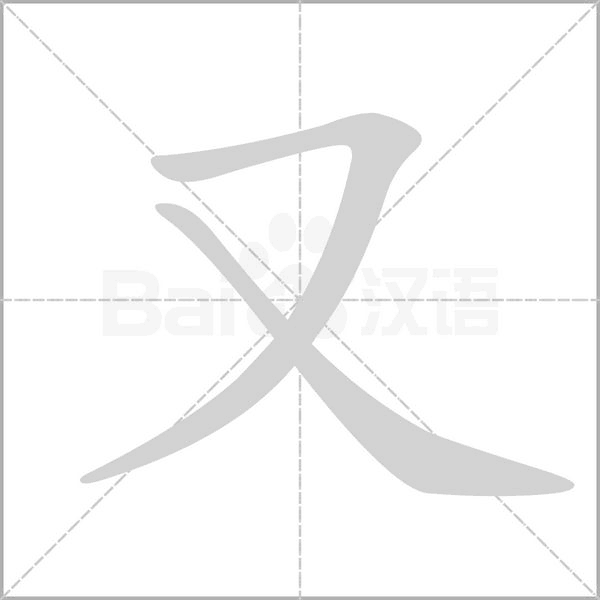
yòu: and as well; again; additionally; also.
radical: 又
Both traditional and simplified characters are written as:

爸爸 N. [bàba] dad. 我爸爸是美國人/我爸爸是美国人。My father is American.
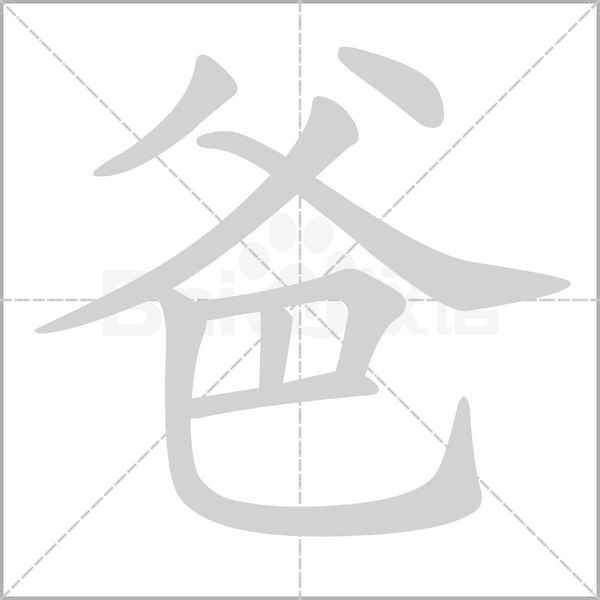
bà: father; dad
radical: 父 (fù; father)
Both traditional and simplified characters are written as:
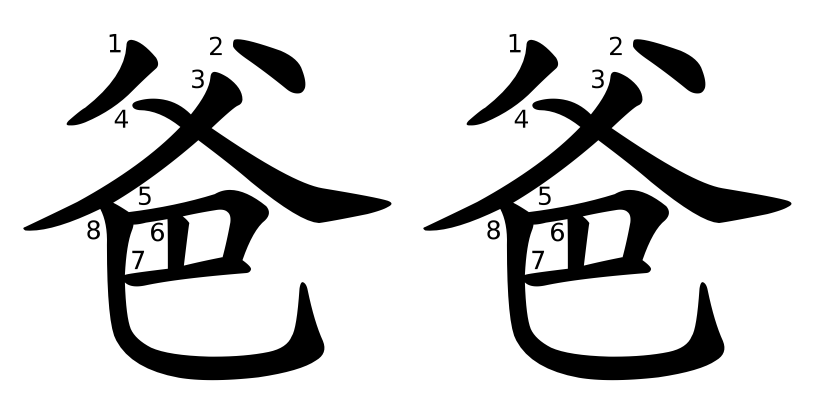
媽媽/妈妈 N. [māma] mom. 我媽媽是中國人/我妈妈是中国人。My mother is Chinese.

mā: mother
radical: 女 (nǚ; female)
Simplified character:
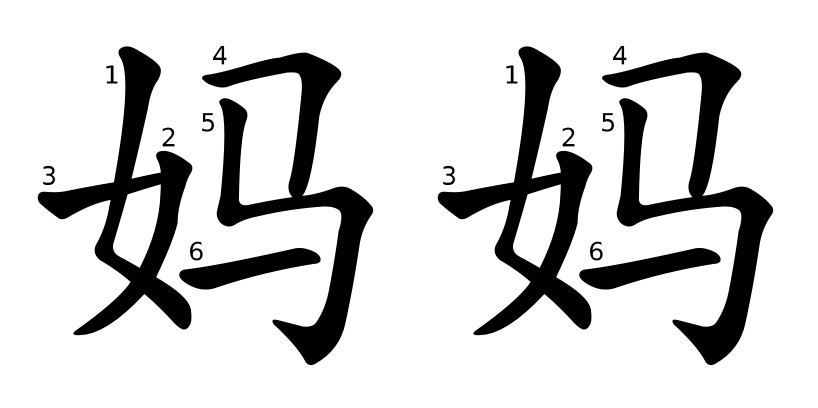
夠/够 Adj. [gòu] enough. 你的錢夠不夠?/你的钱够不够?Is your money enough?
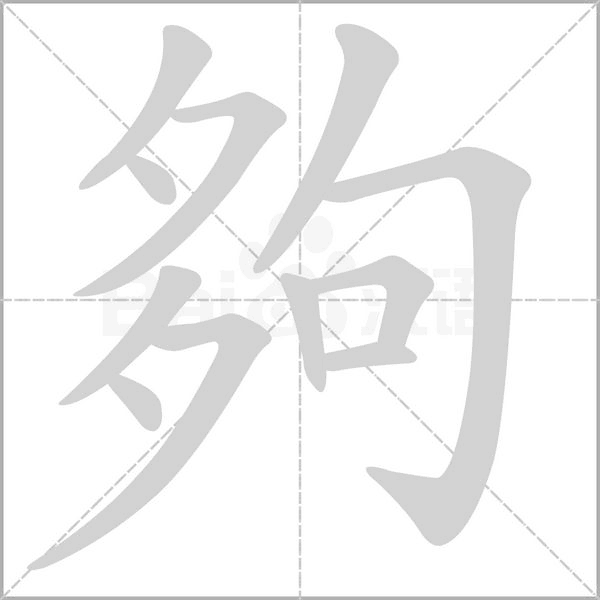
gòu: enough
radical: 夕 (xī, night)

Chinese Studies Classroom: The radical of “够” is “夕.” In oracle bone script, the shape of “夕” resembles a moon, which represents the night and also signifies the long accumulation of time from morning to night. The original meaning of “够” refers to having enough, or reaching a certain number or degree.
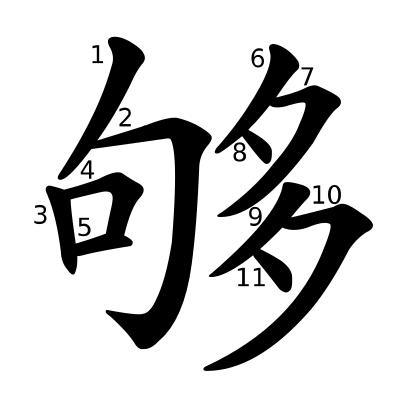
This is the simplified character form.
飯菜/饭菜 NP. [fàncài] meal. 學校的飯菜很好/学校的饭菜很好。The food at school is very good.

fàn: meal
radical: 食 (shí; food)
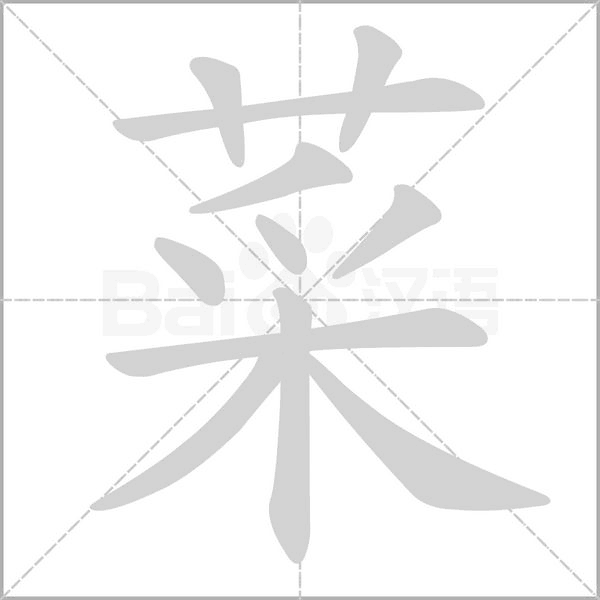
cài: vegetable
radical: 艹 (cǎo; grass or the general term for herbaceous plants)
Simplified character:
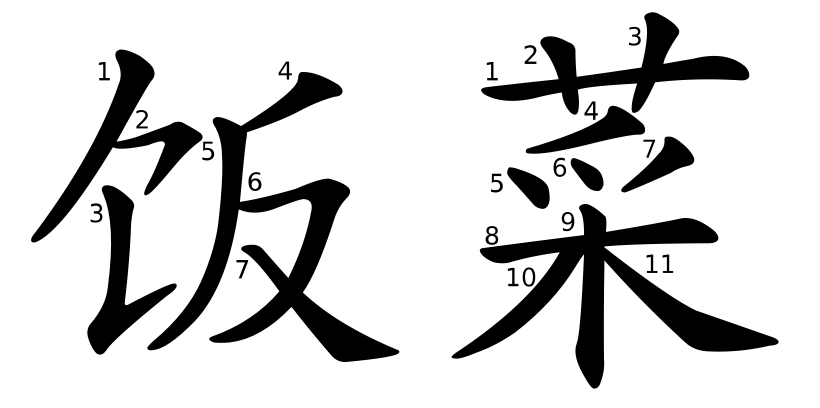
一下 [yíxià] a little bit. 我看一下兒/我看一下儿。Let me take a look.
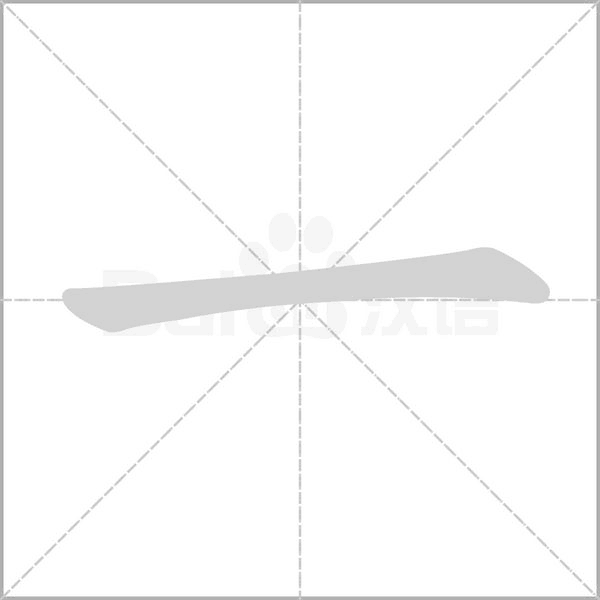
yī: one
radical: 一
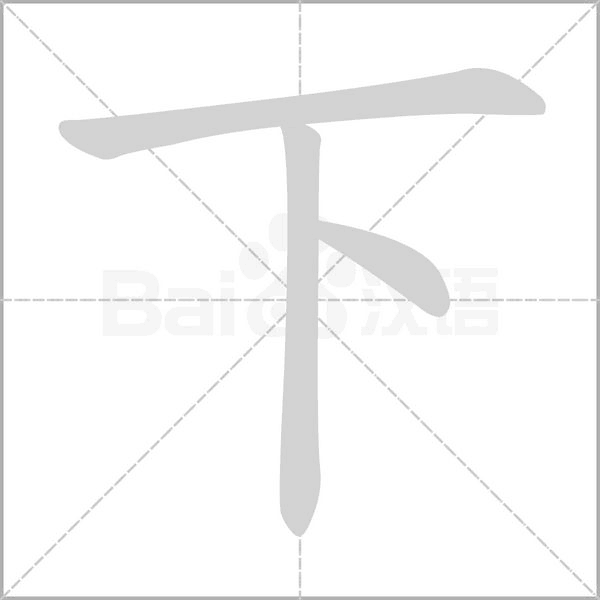
xià: below; down; under; lower; next
radical: 一
Both traditional and simplified characters are written as:
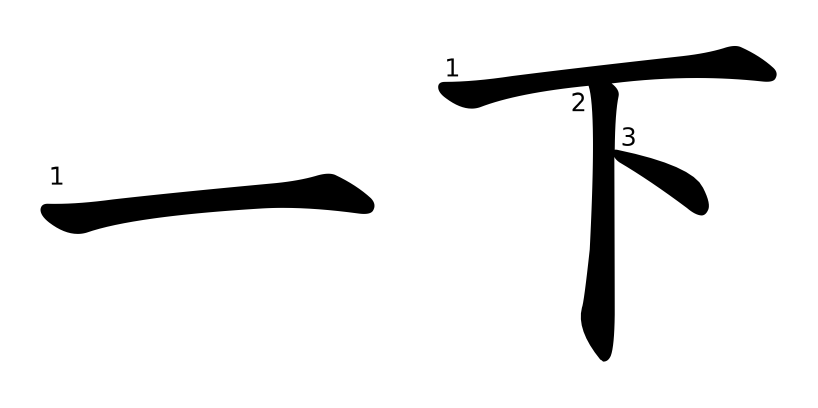
能 Aux.V. [néng] can. 我能說英文嗎?/ 我能说英文吗?Can I speak in English?

néng: can; be able to
radical: 厶

Chinese Studies Classroom: In ancient scripts, the character “能” resembled a bear, with its large mouth facing downward, legs and feet at the front and back, hooked claws on its feet, and a short tail. Later, the character “能” was borrowed to mean “skill” or “ability” and could also function as a verb indicating subjective capability. The meaning of “bear,” however, was taken on by the newly created character “熊.”
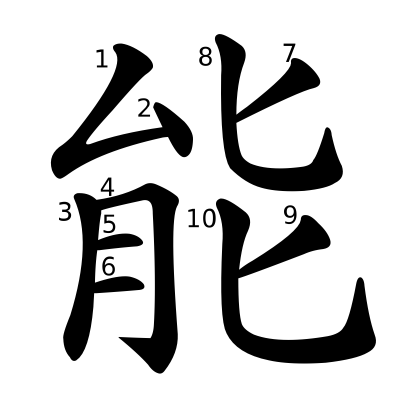
Both traditional and simplified characters are written like this.
自己 Pron. [zìjǐ] self. 我自己去。I’ll go by myself.

zì: self
radical: 自

Chinese Studies Classroom: The ancient form of the character “自” resembles a person’s nose, and later it was borrowed to represent the first-person pronoun, meaning “oneself.”

jǐ: oneself
radical: 己
Both traditional and simplified characters are written as:
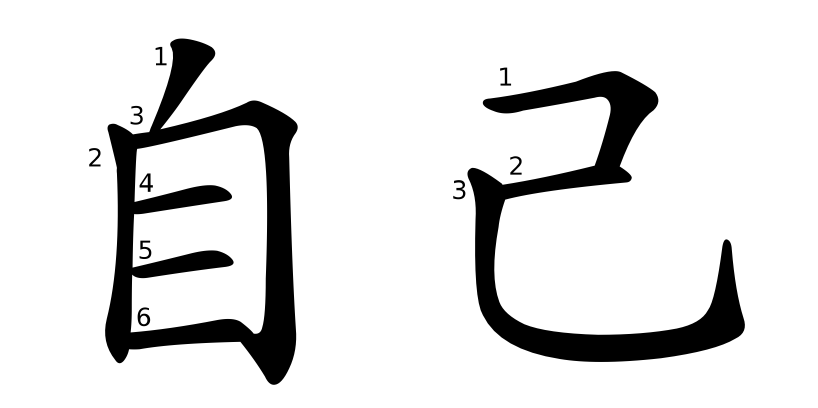
你是誰/你是谁 [nǐ shì shéi] Who are you?
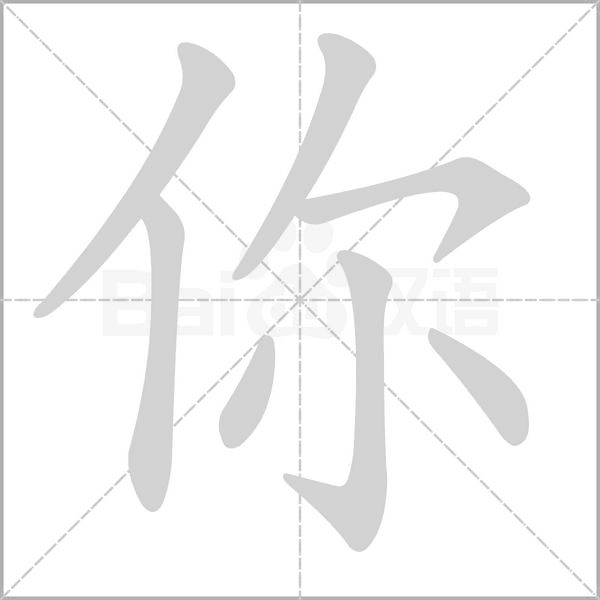
nǐ: you
radical: 亻(rén; person)
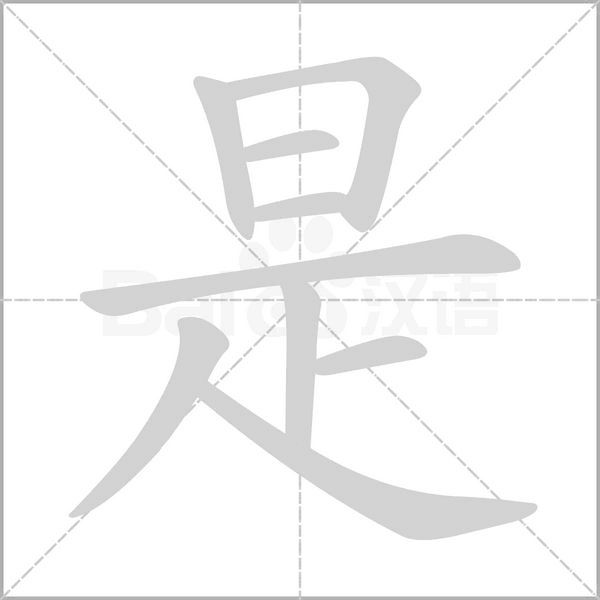
shì: be; is; are
radical: 日 (rì, sun)
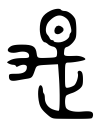
Chinese Studies Classroom: One explanation is that in the Bronze Script, the character “是” consists of a sundial on top and the character “正” (upright) below, with the basic meaning of upright and not skewed. It later extended to mean correctness and further evolved into a response word, expressing agreement or approval. After the Han dynasty, “是” was used as a copula to indicate judgment.
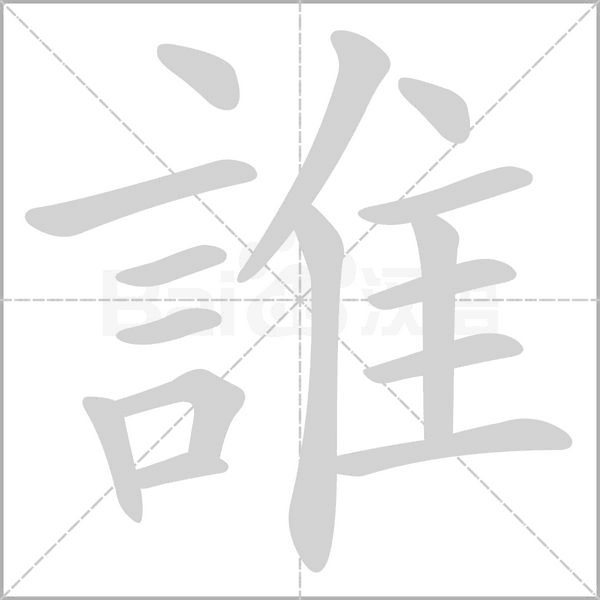
shéi: who
radical: 言 (yán; language)
Simplified character:

先說/先说 VP. [xiānshuō] speak first. 我先說/我先说。I’ll speak first.
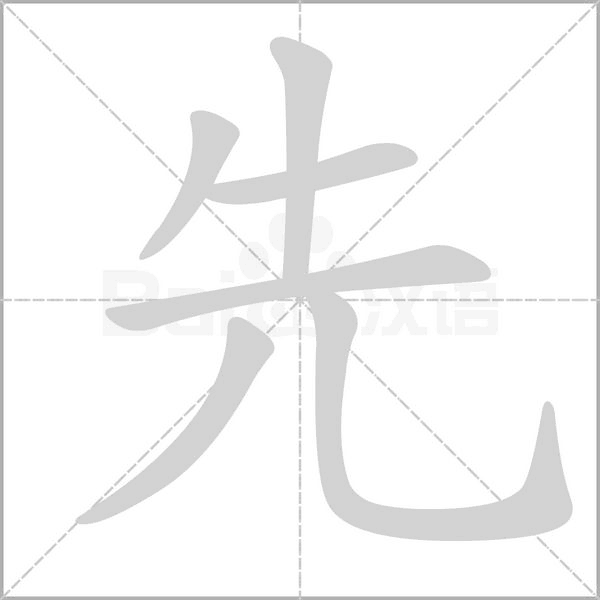
xiān: first
radical: 儿

Chinese Studies Classroom: In Oracle Bone Script, the upper part of the character “先” depicts a foot with visible toes, while the lower part represents a standing person. The image of a person lifting their foot to step forward conveys the meaning of being ahead. Thus, the basic meaning of “先” is “to be in front,” which later extended to indicate precedence in time or space.
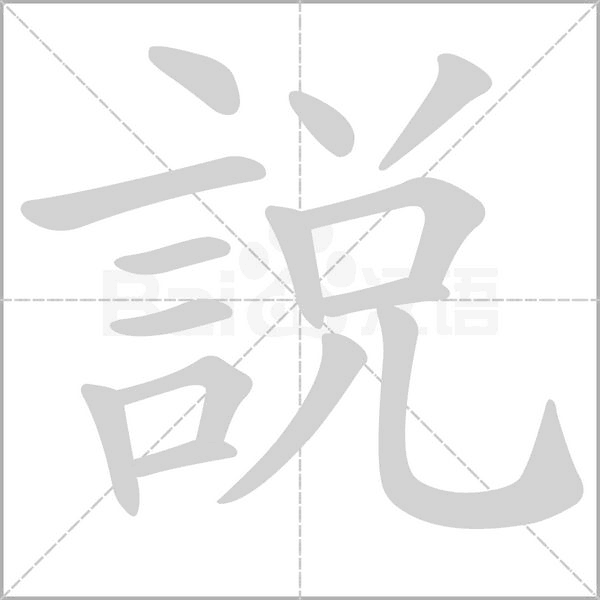
shuō: speak
radical: 言 (yán; language)
Traditional character:
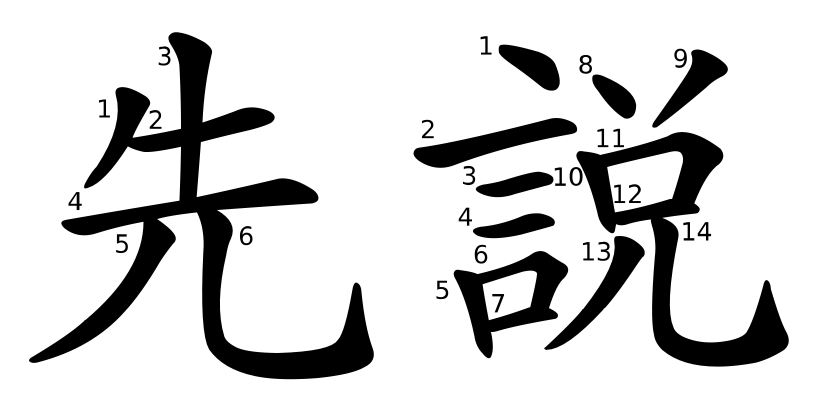
Simplified character:
.png)
問題/问题 N. [wèntí] question. 有問題嗎?/有问题吗? Is there a problem?
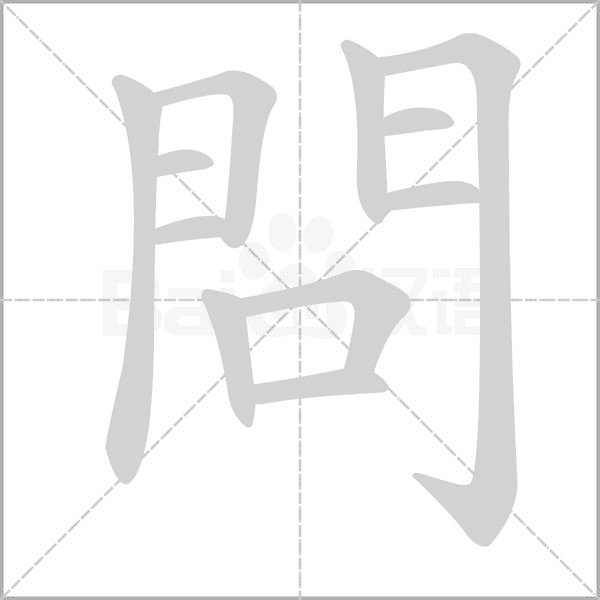
wèn: ask
radical: 門 (mén; door)
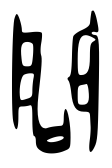
Chinese Studies Classroom: In Oracle Bone Script, the character “問” is composed of “門” (door) and “口” (mouth), representing a person outside the door asking someone inside a question. Therefore, the original meaning of “問” is to seek answers to something one does not know.
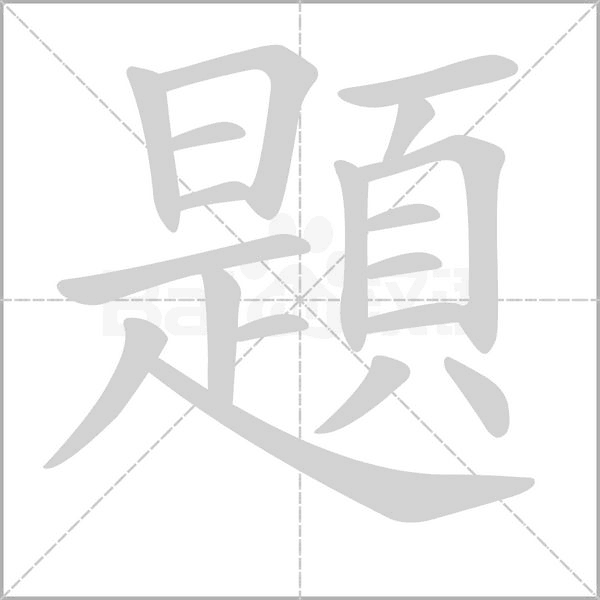
tí: Practice questions in exams or assignments; subject; title; topic
radical: 頁 (yè)
Traditional character:
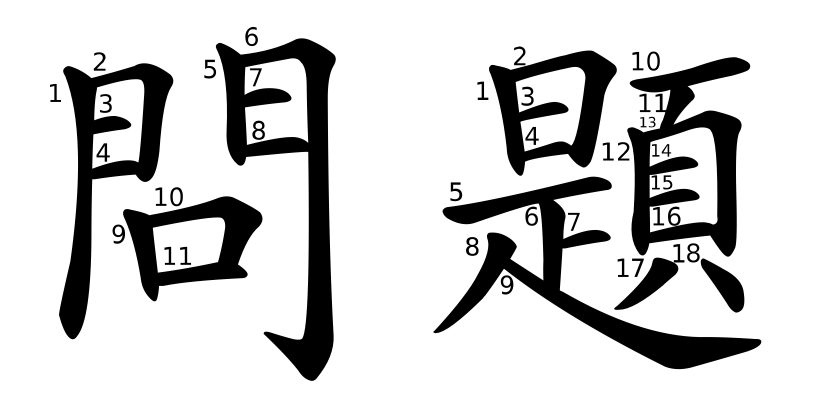
Simplified character:
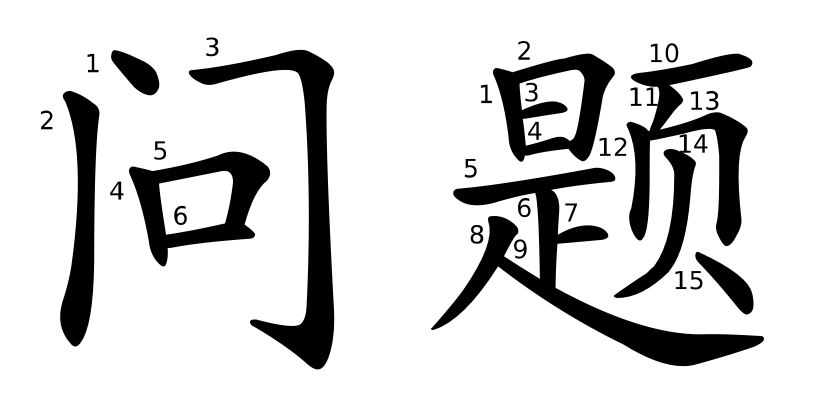
一共 Adv. [yígòng] altogether. 我們一共有五個人/我们一共有五个人。There are five of us in total.

yī: one
radical: 一

gòng: common; joint; mutual; together; altogether
radical: 八
Both traditional and simplified characters are written as:
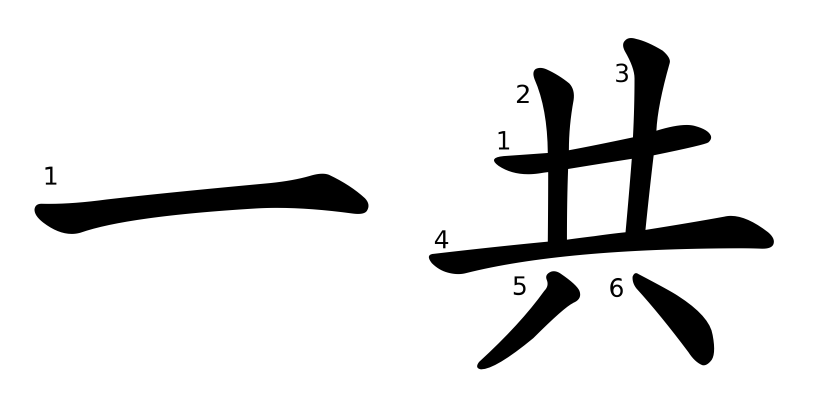
六隻狗/六只狗 NP. [liùzhīgǒu] six dogs. 我家有六隻狗/我家有六只狗。There are six dogs in my family.
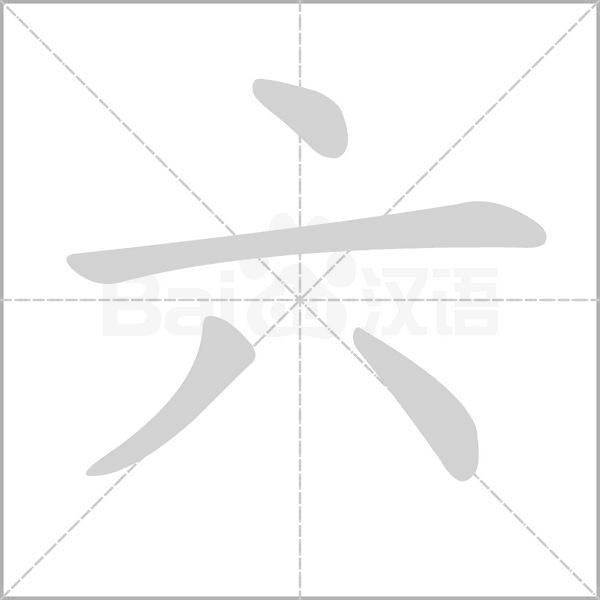
liù: six
radical: 八

Chinese Studies Classroom: “六” is a pictographic character. In Oracle Bone Script, it resembles a simple hut and was originally used to represent the concept of “hut” (lú). Because the ancient pronunciations of lú (“hut”) and liù (“six”) were similar, the character “六” was repurposed to mean “six.” To avoid confusion, a new character, 庐 (lú), was created to specifically represent the meaning of “hut.”
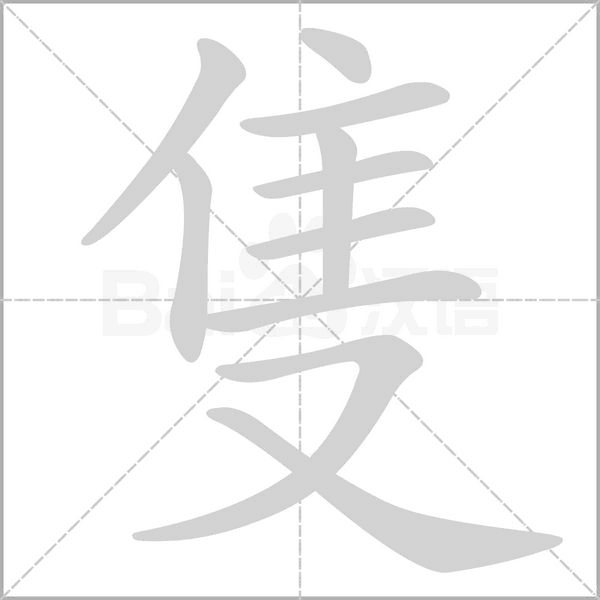
zhī: a measure word commonly used with small animals, such as “一隻狗” (one dog), “兩隻貓” (two cats), and “三隻雞” (three chickens), etc.
radical: 隹 (zhuī, a type of bird with a short tail)
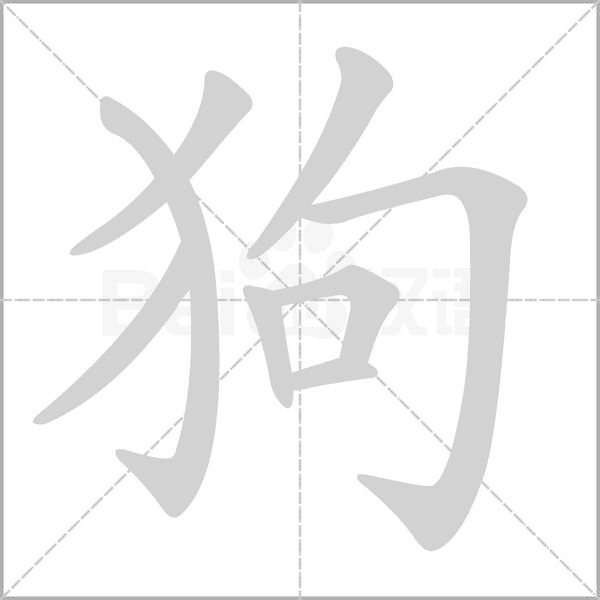
gǒu: dog
radical: 犭(quǎn, dog)
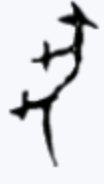
Chinese Studies Classroom: Chinese characters related to “犭” are often associated with animals. For example: 猫 (māo; cat), 狗 (gǒu; dog), 豬/猪 (zhū; pig), etc.
Simplified character:
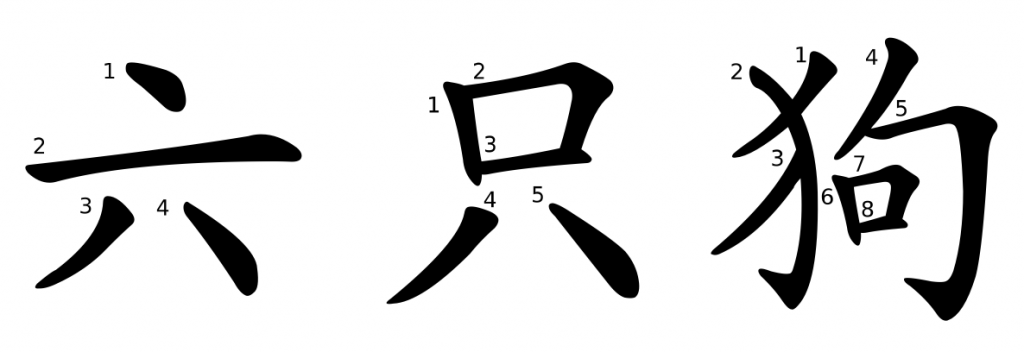
教書/教书 VO. [jiāoshū] to teach. 你喜歡教書嗎?/你喜欢教书吗? Do you like teaching?
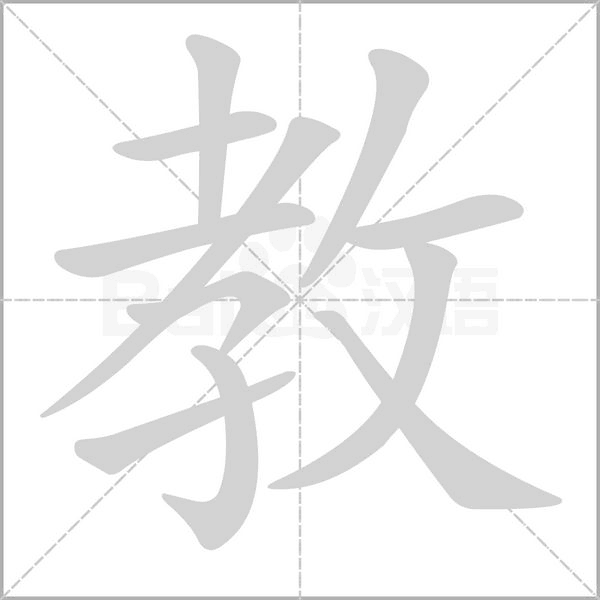
jiāo: teach
radical: 攵(pū; to strike with a small stick held in hand)
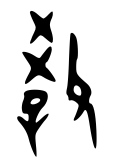
Chinese Studies Classroom: The ancient form of the character “教” resembles a hand holding a small stick, which can be understood as a teacher holding a teaching rod. “子” represents a child. “爻” here is a phonetic component, indicating that in ancient times, the pronunciation of “教” was similar or identical to “爻.” These components together depict a teacher holding a teaching rod, urging a child to learn. The original meaning of “教” is to instruct or educate.
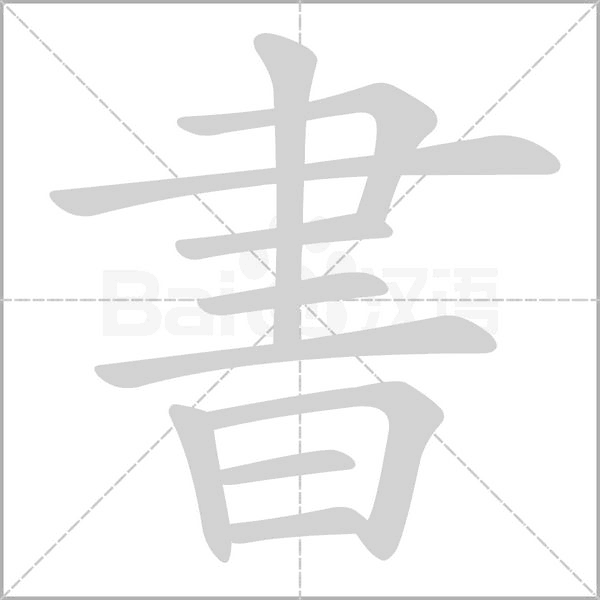
shū: book
radical: 乛
Traditional character:
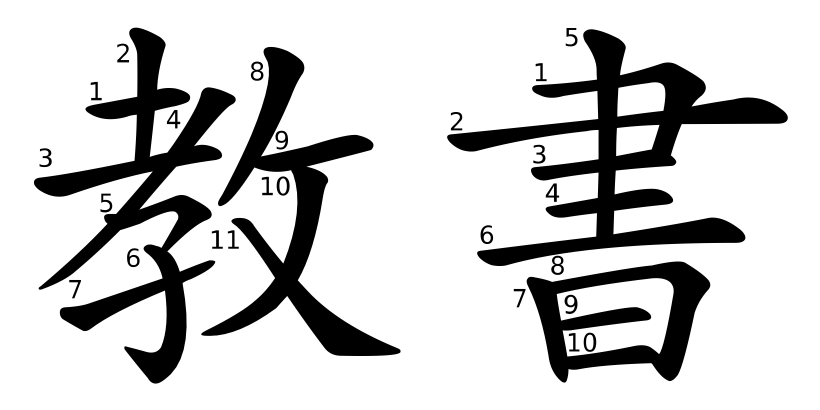
Simplified character:
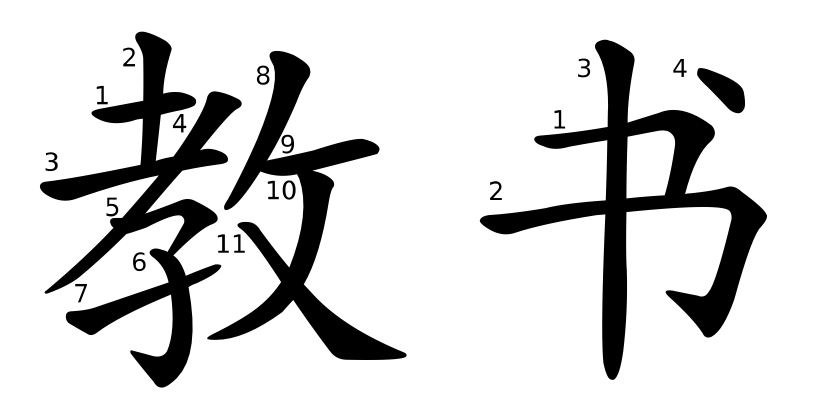
音樂/音乐 N. [yīnyuè] music. 我喜歡聽音樂/我喜欢听音乐。I like listening to music.
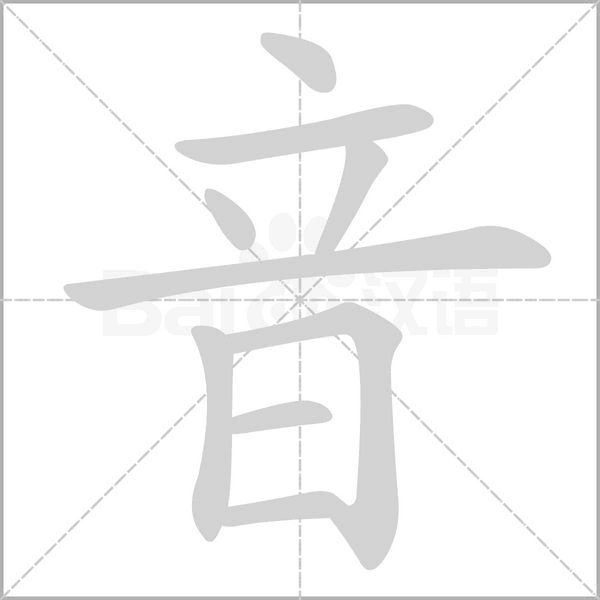
yīn: sound
radical: 音

Chinese Studies Classroom: In ancient characters, the word “音” is formed by adding a small dot to the “tongue” radical, symbolizing that sound comes from the tongue. This sound can refer to speech produced by a person or the pleasant tones emitted by a musical instrument.
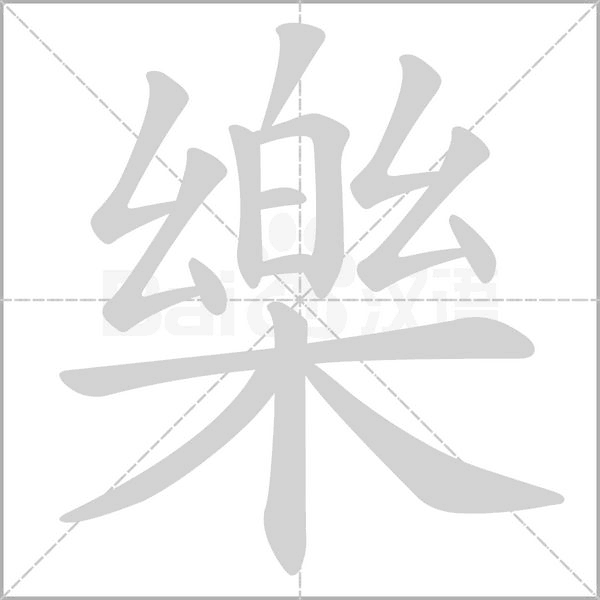
yuè: music; musical instrument
radical: 木 (mù, wood)
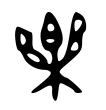
Chinese Studies Classroom: In ancient characters, the word “樂” consists of a wooden structure representing a Chinese stringed instrument at the bottom, and silk strings at the top. The original meaning of “樂” referred to a type of stringed instrument. Later, it came to represent all musical instruments. Since music can bring joy and happiness, the character “樂” (yuè) extended to mean “joy.” When it refers to happiness or joy, it is pronounced “樂” (lè).
Simplified character:

幾個/几个 VP. [jǐge] how many. 你們有幾個人?/你们有几个人? How many people are there in your group?
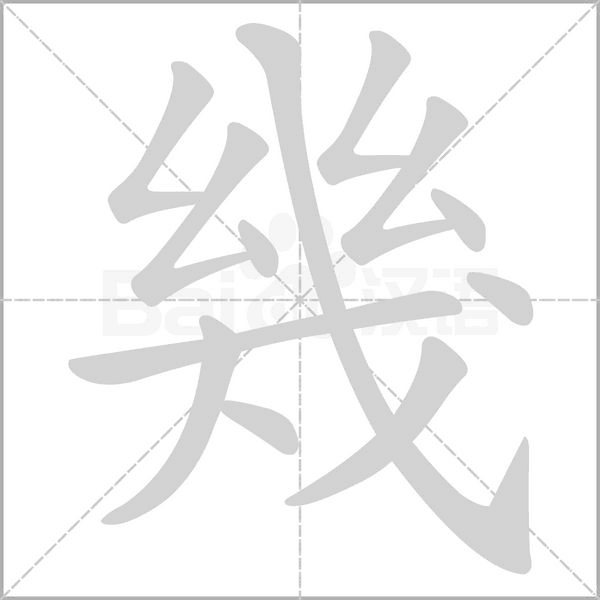
jǐ: how many
radical: 幺

Chinese Studies Classroom: In ancient characters, the top part of “幾” consists of two “幺” characters, which resemble silk threads. When placed together, they represent something very small. The bottom part of “幾” depicts a person standing with a weapon, “戈,” on their shoulder. Therefore, the original meaning of “幾” is to observe subtle signs of something and take action. Over time, the meaning expanded from “subtle” to imply “almost” or “nearly.” Similarly, based on the idea of “smallness,” “幾” can also represent an indefinite small number, which later evolved to mean “how many.”
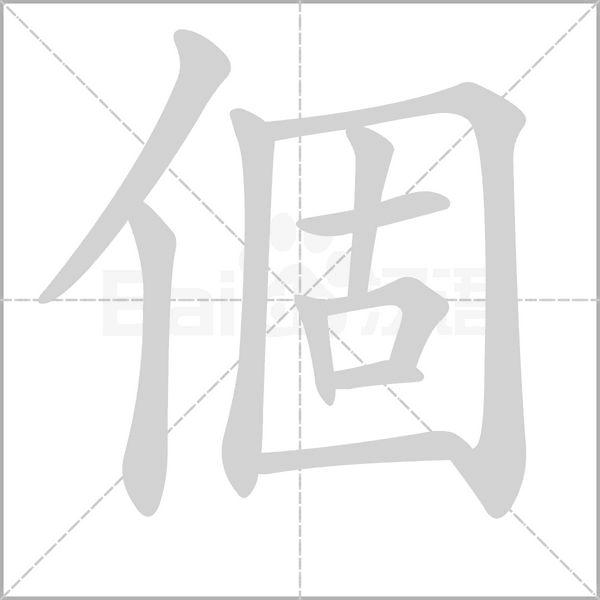
gè: Used as a measure word, it also refers to size, body shape, or the dimensions of an object.
radical: 亻(rén, person)
Simplified character:
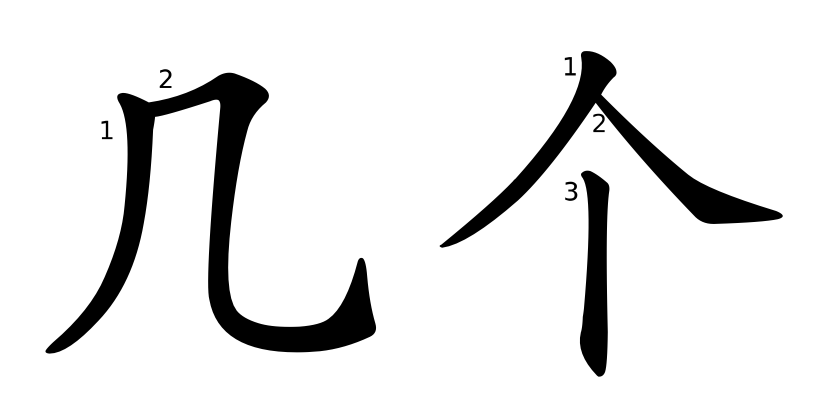
爺爺/爷爷 N. [yéye] grandfather (father’s father). 我爺爺會說中文/我爷爷会说中文。My grandfather can speak Chinese.
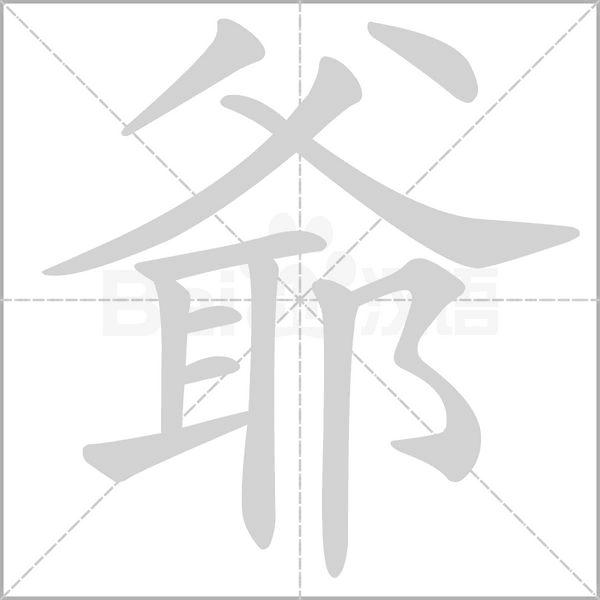
yé: grandfather (father’s father)
radical: 父(fù; father)
Simplified character:

奶奶 N. [nǎinai] grandmother (father’s mother). 我奶奶是英國人/我奶奶是英国人。My grandmother is British.
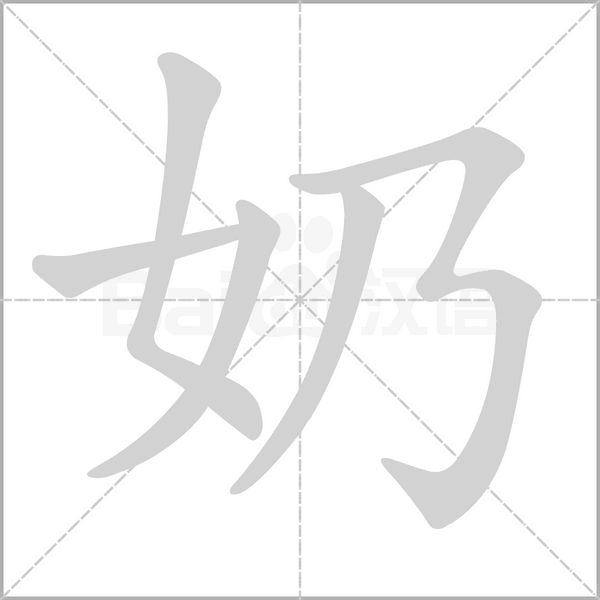
nǎi: milk
radical: 女 (nǚ; female)
Both traditional and simplified characters are written as:
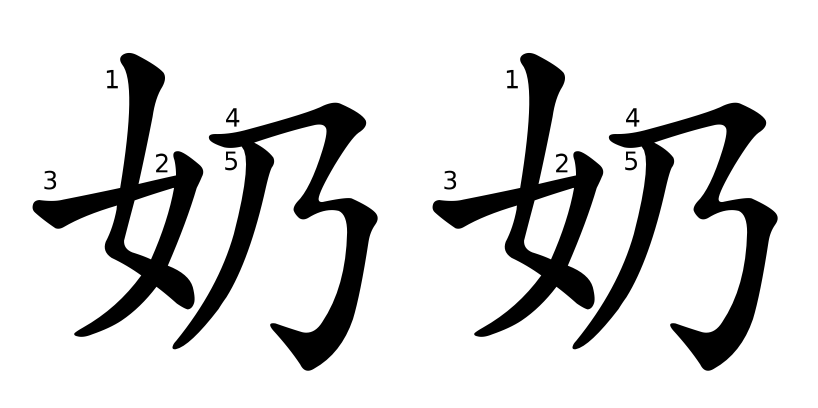
只有 VP. [zhǐyǒu] only have. 我只有一个朋友。I only have one friend.
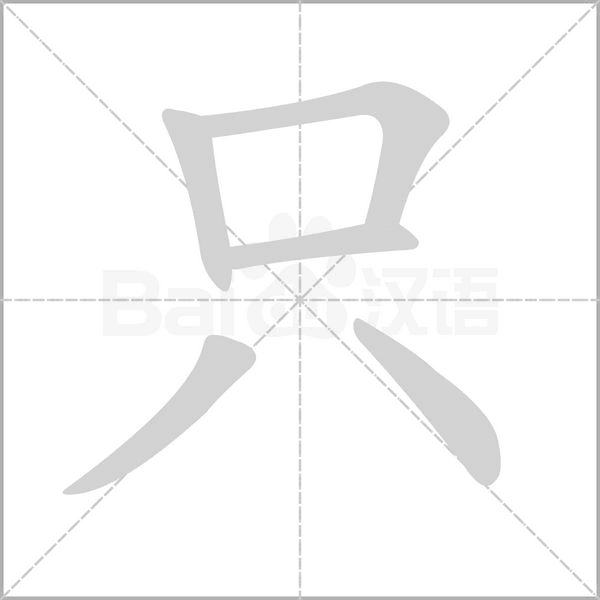
zhǐ: only
radical: 口 (kǒu)
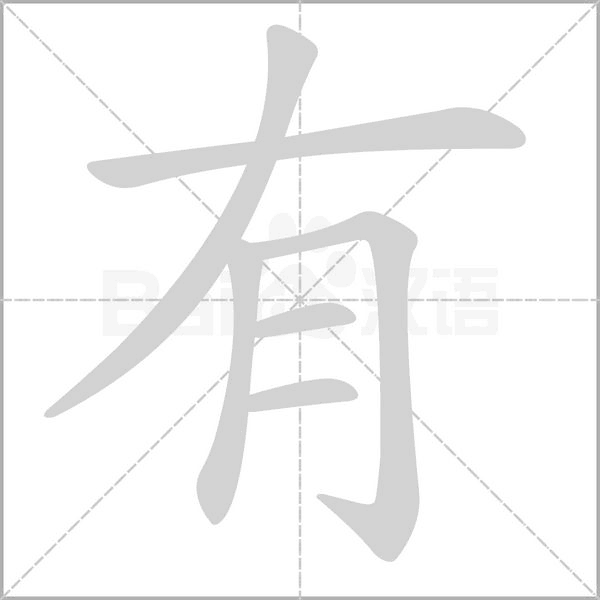
yǒu: to have
radical: 月 (yuè, flesh)
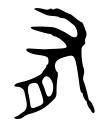
Chinese Studies Classroom: In Western Zhou Bronze Script, the upper right part of the character “有” represents a hand, while the lower left part depicts a piece of meat, resembling the cross-section of meat. It signifies having meat in hand, meaning “having“ food.
Both traditional and simplified characters are written as:
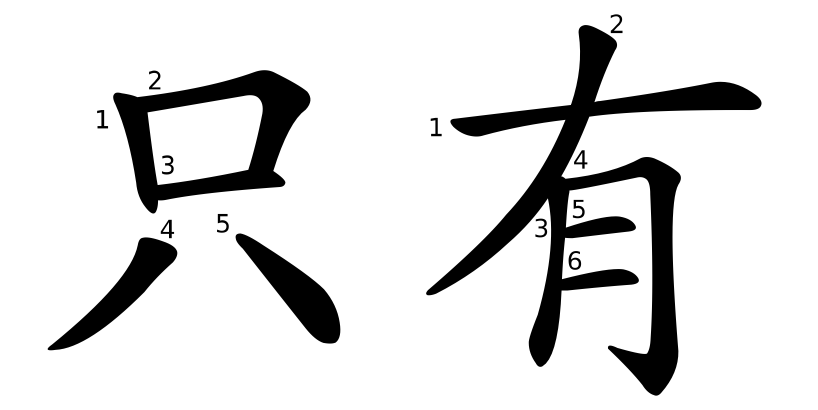
兒子/儿子 N. [érzi] son. 我兒子會說中文/我儿子会说中文。My son can speak Chinese.

ér: child
radical: 兒

zǐ: son; person
radical: 子

Chinese Studies Classroom: In ancient characters, the word “子” resembled an infant in a swaddling cloth. Therefore, the original meaning of “子” is “baby,” which later extended to mean “children” or “offspring.”
Simplified character:
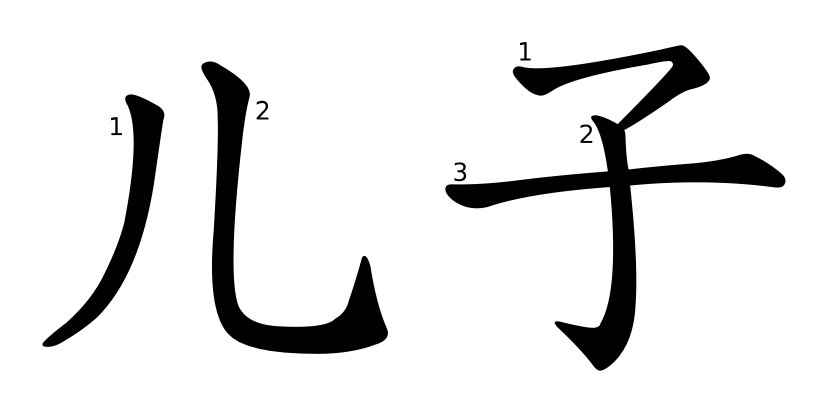
女兒/女儿 N. [nǚér] daughter. 我女兒很忙/我女儿很忙。My daughter is very busy.
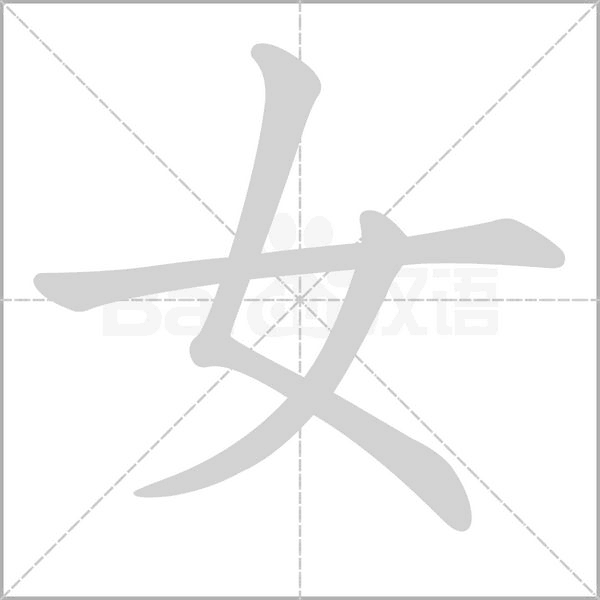
nǚ: female
radical: 女

Chinese Studies Classroom: In Oracle Bone Script, the character “女” resembled a woman kneeling with her hands crossed in front of her chest. The meaning of “女” is female or woman.

ér: child
radical: 兒
Simplified character:
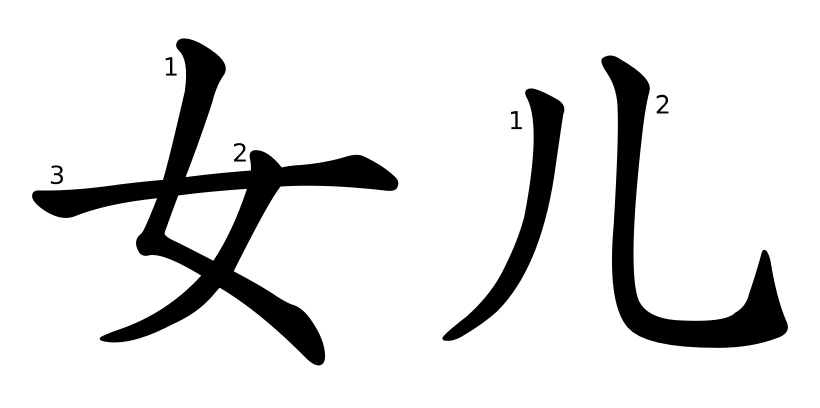
明白 Adj. [míng.bái] clear. 我不明白。I don’t understand.
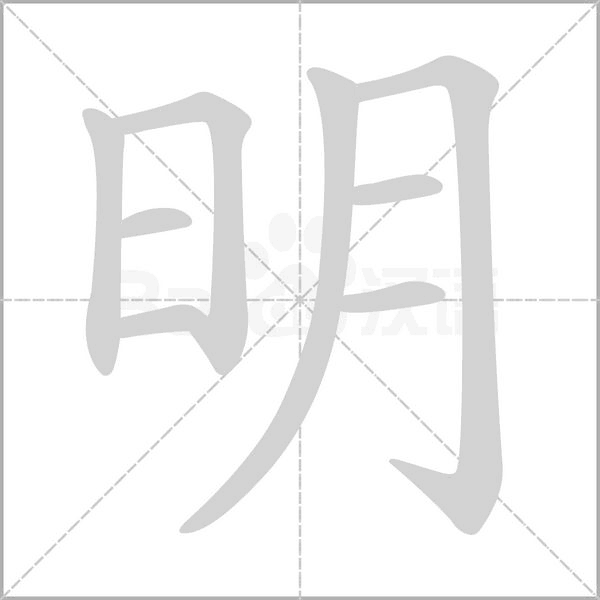
míng: bright; clear
radical: 日
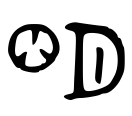
Chinese Studies Classroom: In ancient script, the left side of the character “明” represents the sun, and the right side represents the moon. The original meaning of this character is the radiant light produced when the sun and moon shine together.
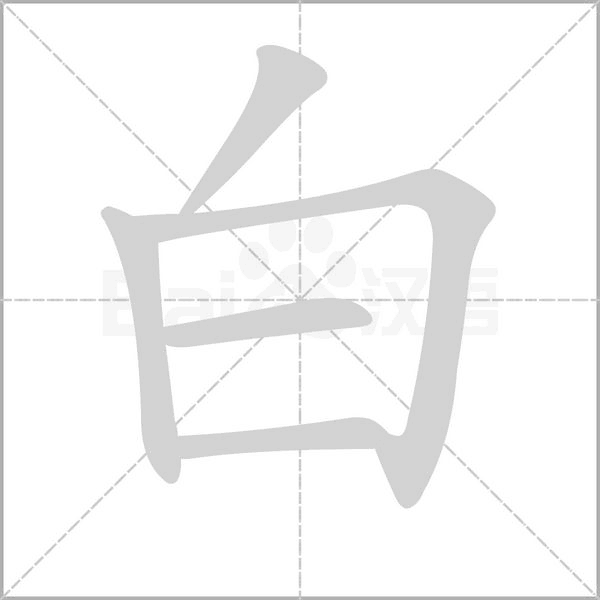
bái: white
radical: 白
Both traditional and simplified characters are written as:
